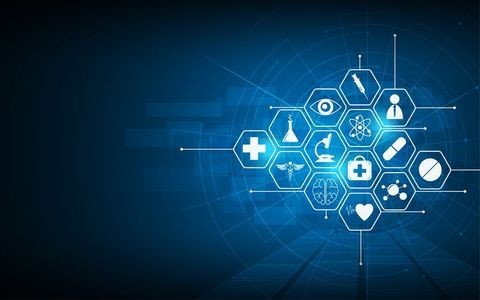IRS Issues Guidance on the Inflation Reduction Act’s Clean Vehicle Provisions and Treasury Releases White Paper on Forthcoming Critical Minerals and Battery Guidance
Client Alert | 7 min read | 01.10.23
On December 29, 2022, the IRS released new guidance on whether vehicles qualify for tax credits under the clean vehicle provisions of the Inflation Reduction Act (the “IRA”). At the same time, Treasury released a much-anticipated White Paper describing the Administration’s planned approach to assessing whether vehicles meet the critical mineral content and battery processing requirements of the IRA.
The IRS’s Guidance has Three Components
- FAQs (FS-2022-42) that will help consumers better understand how to access the various tax incentives for the purchase of new and used electric vehicles available beginning January 1, 2023. These FAQs include a link containing a list of clean vehicles that manufacturers have indicated to the IRS meet the requirements to claim the new clean vehicle tax credit. The list will be updated over the coming days and weeks, so consumers looking to purchase a new clean vehicle should consider checking it regularly.
- Notice 2023-9 sets forth the tax credit eligibility requirements for commercial clean vehicles under 14,000 pounds. The tax credit is the lesser of $7,500, 15% of a qualifying vehicle’s cost (30% if the vehicle is not gas- or diesel-powered), or the “incremental cost” of the vehicle relative to a solely gas- or diesel-powered vehicle of comparable size and use.
- A notice of intent to propose regulations on the tax credit for new clean vehicles. This includes definitions that will provide clarity to manufacturers and buyers around the changes that took effect automatically on January 1, 2023, such as Manufacturer’s Suggested Retail Price limits. Importantly, the notice specifies that a vehicle is considered to be “placed in service” for the purposes of the tax credit on the date the taxpayer takes possession of the vehicle, which may or may not be the same date as the purchase date.
Treasury White Paper on Critical Minerals and Battery Component Processing
In addition to the above pieces of guidance, which taxpayers could begin relying on as of January 1, 2023, Treasury also released a white paper (“White Paper”) on the anticipated direction of Treasury and the IRS’s upcoming proposed guidance on the critical minerals and battery components requirements of the IRA and the process for determining whether vehicles qualify under these requirements. While this preliminary information is not proposed guidance, it will help manufacturers identify vehicles that will likely be eligible for the tax credit when the new requirements go into effect after Treasury and the IRS issue a Notice of Proposed Rulemaking.
One significant pending change involves how the credit amount is calculated. Prior to when the Inflation Reduction Act’s critical mineral and battery provisions become applicable, the tax credit is calculated based on a vehicle’s battery capacity, with a base amount of $2,500, an additional $417 for a battery with a capacity of 5 kilowatt hours, and an additional $417 for each kilowatt hour of capacity in excess of 5 kilowatt hours, up to a maximum credit of $7,500 per vehicle. Instead of calculating the credit based on the vehicle’s battery capacity, the Inflation Reduction Act’s pending provisions, once applicable, will tie the credit amount to whether the new clean vehicle’s battery meets a critical mineral requirement ($3,750) and a battery component requirement ($3,750), up to a maximum credit of $7,500 per vehicle.
The critical mineral and battery component requirements in the IRA apply to vehicles placed in service after Treasury and the IRS issue proposed guidance on these requirements. Treasury and the IRS have been working diligently to develop proposed guidance on these novel requirements and will clearly identify such proposed guidance when it is issued. Until then, the clean vehicle credit amount will continue to be determined based on the vehicle’s battery capacity, subject to other eligibility criteria, some of which are new or revised by the Inflation Reduction Act. Treasury and the IRS intend to issue proposed guidance on the critical mineral and battery component requirements in March 2023.
One of the important points addressed in the White Paper is whether critical minerals extracted or processed and battery components manufactured outside of the U.S. will be treated as “qualifying” for purposes of the domestic production requirement of the EV credit rules. EV manufacturers have identified this issue as a priority because most lithium used to produce batteries for EV vehicles comes from outside of the U.S. and is extracted and fully or partially processed in countries without free trade agreements with the U.S., such as China and Bolivia.
Critical Minerals Extracted or Processed Outside of the U.S
According to the Treasury White Paper, companies can meet the critical mineral requirement, once applicable, if the percentage of the value of the critical minerals[1] in a vehicle’s battery that were extracted or processed in the United States, or in any country with which the United States has a free trade agreement in effect, or recycled in North America,[2] is equal to or greater than 40 percent of the value for all critical minerals in a vehicle that is placed in service in 2023 after the date on which Treasury and the IRS issue proposed guidance.[3] The White Paper also indicates that IRS will increase these percentages annually: to 50 percent in 2024, 60 percent in 2025, 70 percent in 2026, and 80 percent after 2026.
If an automaker incorporates recycled critical minerals, then the critical mineral will qualify as being recycled in North America if 50 percent or more of the value added to the critical mineral by recycling is derived from recycling that occurred in North America.
If an automaker uses a newly extracted or processed critical mineral, then that critical mineral would qualify as extracted or processed in the United States, or in a country with which the United States has a free trade agreement in effect, if it meets at least one of the following two criteria:
- 50 percent or more of the value added of the critical mineral extraction steps occurred in the United States or in any country with which the United States has a free trade agreement in effect; or
- 50 percent or more of the value added of the critical mineral processing steps occurred in the United States or in any country with which the United States has a free trade agreement in effect.
Significantly, this analysis applies for any critical mineral that is processed in one country and then reprocessed in a separate country. For example, lithium that undergoes initial processing activities in a plant in Country A and then is transferred to a plant in Country B to undergo final processing activities before being incorporated into a constituent material would be analyzed under this step together with other lithium moving through the same procurement chain.
To calculate the percentage of the value of qualifying critical minerals contained in a battery, manufacturers must sum the value of all qualifying critical minerals (determined separately for each procurement chain) contained in the battery and divide that amount by the sum of the value of all critical minerals contained in the battery. Manufacturers are permitted to determine the value of the critical minerals at any date after the final processing or recycling of the critical minerals, but that date must be uniformly applied for all critical minerals contained in the battery. Manufacturers are also permitted to average the percentage over a period of time (e.g., year, quarter, or month) with respect to vehicles from the same model line, plant, class, or some combination thereof, provided that final assembly occurs within North America.
If the percentage that results from this third step is equal to or greater than 40 percent of all critical minerals in a vehicle placed in service in 2023 after the date on which Treasury and the IRS issue proposed guidance (50 percent in 2024), then the vehicle would satisfy the critical mineral requirement for the new clean vehicle credit.
Battery Components
Once applicable, the battery component requirement, which makes a vehicle eligible for a $3,750 tax credit, will be met if the percentage of the value of the components in the vehicle’s battery that were manufactured or assembled in North America is equal to or greater than 50 percent of the total value of the battery for a vehicle placed in service in 2023 after the date on which Treasury and the IRS issue proposed guidance. The percentage increases to 60 percent in 2024 and 2025, 70 percent in 2026, 80 percent in 2027, 90 percent in 2028, and to 100 percent after 2028.
Treasury and the IRS anticipate proposing that determining the percentage of the value of battery components that goes toward meeting the battery component requirement could be accomplished in the following four steps:
- Determine whether each battery component was manufactured or assembled in North America. A battery component is considered manufactured or assembled in North America if substantially all of the manufacturing or assembly activities for that battery component occur in North America, regardless of the location of the manufacturing or assembly activities of the components that make up the particular battery component.
- Determine the incremental value for each battery component. The resulting incremental value for the battery component will be attributable to North America or not based on the determination made in step 1[4]
- Determine the total value of the battery components by totaling the incremental values of each battery component determined in step 2. This total value may also be calculated by totaling the value of each battery module.
- Calculate the percentage of the value of the battery components that were manufactured or assembled in North America by dividing (1) the sum total of the incremental value determined in step 2 for all battery components that were manufactured or assembled in North America by (2) the total value of the battery components determined in step 3.
The proposed approach has been included in the White Paper to allow the industry time to provide feedback before the proposed regulations are issued. It is critical for any feedback to be submitted in January-early February 2023, before the IRS issues the Notice of Proposed Rulemaking in March 2023.
[1]The term “critical minerals,” as used throughout the White Paper, refers to the applicable critical minerals defined in Section 45X(c)(6) of the Internal Revenue Code.
[2]For purposes of both the critical mineral and the battery component requirements, Treasury and the IRS anticipate proposing that North America means the territory of the United States, Canada, and Mexico as defined in 19 C.F.R. part 182, Appendix A, § 1(1).
[3]See irs.gov for information regarding when a personal use vehicle is placed in service.
[4]For battery components that may be assembled into a battery cell (e.g., cathode electrode, anode electrode, solid metal electrode, separator, liquid electrolyte, solid state electrolyte), the incremental value of such battery components would include the value of the constituent materials contained in such battery components because incremental value would subtract out only the value of other manufactured or assembled battery components, if any, that make up the battery component in question. Because constituent materials are produced by processing or recycling critical minerals – not through manufacturing or assembly – they would not be battery components.
Contacts
Insights
Client Alert | 10 min read | 12.24.25
Since the signing of Executive Order 14187 (“Protecting Children from Chemical & Surgical Mutilation”) in late January 2025, the Trump Administration has made its skeptical stance on gender-affirming care—especially regarding services provided to minors—clear.
Client Alert | 3 min read | 12.24.25
Keeping it Real: FTC Targets Fake Reviews in First Consumer Review Rule
Client Alert | 5 min read | 12.23.25
An ITAR-ly Critical Reminder of Cybersecurity Requirements: DOJ Settles with Swiss Automation, Inc.
Client Alert | 2 min read | 12.23.25
Record-Setting False Claims Act Settlement Highlights DOJ Commitment to Customs Enforcement



